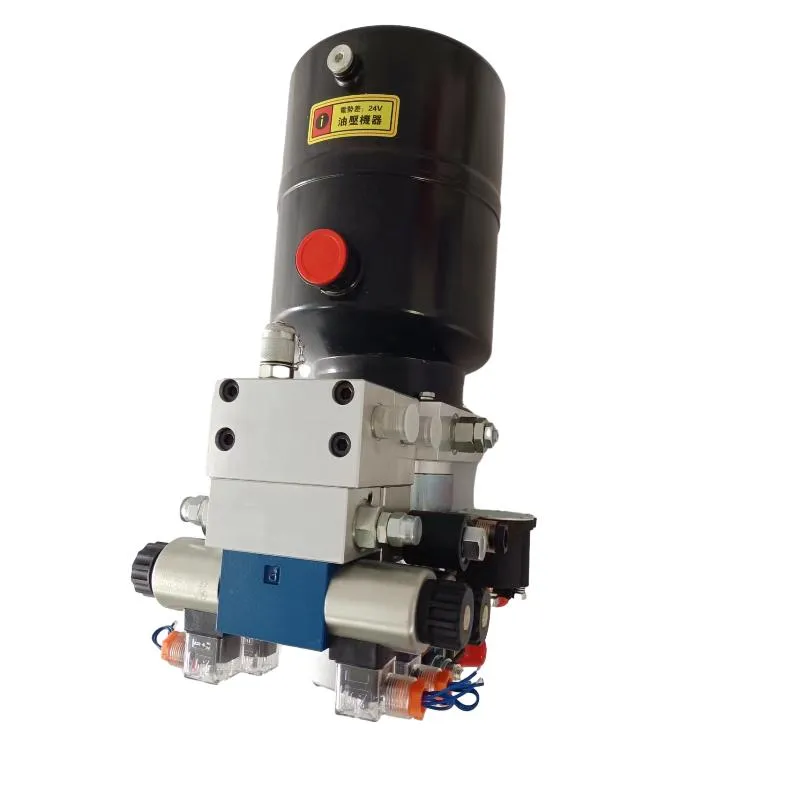Aug . 13, 2024 08:42 Back to list
Innovative Hydraulic Pusher Cylinder Solutions for Enhanced Industrial Performance and Efficiency
The Importance of Hydraulic Pusher Cylinders in Modern Machinery
In the realm of industrial automation and machinery, the hydraulic pusher cylinder is a critical component that enhances efficiency and productivity. Designed for a variety of applications, these robust cylinders are primarily utilized to create linear motion by converting hydraulic energy into mechanical work. This article explores the significance, working principles, applications, and advantages of hydraulic pusher cylinders.
Working Principles
Hydraulic pusher cylinders operate based on Pascal's principle, which states that when pressure is applied to a confined fluid, the pressure change occurs uniformly throughout the fluid. By utilizing a hydraulic pump, fluid is directed into the cylinder, moving a piston within. This movement generates significant force, which can be harnessed for pushing, pulling, or lifting various loads. The application of hydraulic power allows for precise control over movement, making hydraulic pusher cylinders essential in settings where accuracy and force are paramount.
Applications in Various Industries
The versatility of hydraulic pusher cylinders makes them indispensable in numerous industries, including manufacturing, construction, and automotive sectors.
1. Manufacturing In production lines, hydraulic pusher cylinders are employed for material handling and assembly processes. They efficiently push materials or components into position, enabling smooth transitions and reducing downtime.
2. Construction Construction equipment often utilizes hydraulic pusher cylinders to operate tools such as excavators, bulldozers, and cranes. These cylinders facilitate heavy lifting, pushing soil, and maneuvering large materials around job sites.
hydraulic pusher cylinder product

3. Automotive In the automotive industry, these cylinders aid in assembly tasks, helping to fit components together with precision. They are also used in testing setups to simulate stresses on vehicle parts.
4. Metal Fabrication Hydraulic pusher cylinders are used to push metal workpieces into forming machines, ensuring consistent and accurate shaping of metals in manufacturing processes.
Advantages of Hydraulic Pusher Cylinders
One of the biggest advantages of hydraulic pusher cylinders is their ability to generate a large amount of force while occupying a relatively small space. This compactness makes them ideal for applications where space is at a premium. Additionally, hydraulic systems can easily be scaled to accommodate varying loads, allowing for adaptability in different working conditions.
Moreover, hydraulic pusher cylinders are known for their efficiency. They provide a continuous force output, enabling sustained operation without the fatigue associated with mechanical systems. This characteristic results in less wear and tear on machinery, extending the lifespan of both the cylinder and the equipment it operates.
Safety is another essential aspect of hydraulic systems. Most hydraulic pusher cylinders are designed with built-in safety features, such as pressure relief valves, to prevent potential overload situations. These mechanisms ensure that operations remain smooth and safe, minimizing workplace accidents.
Conclusion
Hydraulic pusher cylinders play an instrumental role in enhancing operational efficiency across various industries. By harnessing the power of hydraulics, these cylinders provide reliable and precise motion control for pushing, pulling, and lifting tasks. With their compact design, adaptability, and safety features, hydraulic pusher cylinders stand out as indispensable components in modern machinery. As industries continue to evolve and demand higher efficiency, the significance of hydraulic technology will only grow, solidifying the importance of hydraulic pusher cylinders in industrial applications.
-
1.5 Ton Flipping Oil Cylinder 70/82-40-217-720-Hebei Shenghan Hydraulic Machinery|Precision Hydraulic Cylinder,Custom Hydraulic Solutions
NewsAug.29,2025
-
1.5 Ton Flipping Oil Cylinder 70/82-40-217-720 | Hebei Shenghan Hydraulic Machinery Co., Ltd.
NewsAug.29,2025
-
High-Precision [90/105-50-180-480] Industrial Component | Durable & Reliable
NewsAug.27,2025
-
High-Performance Set of 50/60-45-290 471 | Durable & Reliable Components
NewsAug.26,2025
-
Efficient Pallet Truck Power Units - Reliable Hydraulic Systems
NewsAug.25,2025
-
Premium Set of 50/60-45-290 471 Parts | High Performance
NewsAug.24,2025
